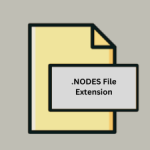.KSD File Extension

Native Instruments Massive Sound File
| Developer | Native Instruments |
| Popularity | |
| Category | Audio Files |
| Format | .KSD |
| Cross Platform | Update Soon |
What is an KSD file?
.KSD files serve as containers for preset data in Native Instruments’ Massive synthesizer. They encapsulate the various parameters, settings, and modifications applied to a sound within the Massive environment.
These files enable users to save and share their meticulously crafted sounds, fostering a community-driven ecosystem of sound design and exploration.
More Information.
When Massive burst onto the music production scene, it revolutionized electronic music with its revolutionary wavetable synthesis and modulation capabilities.
The introduction of .KSD files further solidified Massive’s status as an indispensable tool for sound designers and music producers.
Initially, .KSD files were conceived to streamline the process of saving and recalling presets within the Massive plugin.
They provided a convenient means for users to organize their custom sounds, facilitating seamless integration into their production workflow.
Over time, the Massive community flourished, with users exchanging .KSD files, sharing their sonic creations, and pushing the boundaries of sound design.
Origin Of This File.
The genesis of the .KSD file extension traces back to the development of Native Instruments Massive, which was first released in 2007.
As the software gained traction among producers and electronic musicians, the need arose for a standardized format to store and exchange sound presets efficiently.
Thus, .KSD files emerged as the designated file type for preserving and transporting Massive’s intricate sound designs.
File Structure Technical Specification.
.KSD files follow a structured format designed to store a comprehensive array of parameters and settings associated with a sound preset.
While the specific details of this format are proprietary to Native Instruments, .KSD files typically encompass information such as oscillator settings, filter configurations, modulation routings, effects settings, and more.
Internally, .KSD files may utilize XML or binary encoding to represent the preset data efficiently. This allows for rapid loading and parsing within the Massive software environment, ensuring minimal latency when accessing saved presets.
How to Convert the File?
Converting .KSD files to alternative formats or platforms may be necessary to facilitate compatibility or integration with other software.
While direct conversion tools are specifically tailored for .KSD files may not be readily available, users can explore the following approaches:
- Manual Recreation: Users can recreate the sound design and parameters of a .KSD file within their desired software environment manually. While this approach requires time and effort, it ensures complete control over the conversion process and allows for customization to suit specific requirements.
- Third-Party Plugins: Certain third-party plugins or software applications may offer functionality for importing .KSD files or emulating the characteristics of Native Instruments Massive. By leveraging these tools, users can translate .KSD presets into formats compatible with their preferred synthesis platforms.
- Native Instruments Ecosystem: Within the Native Instruments ecosystem, users can explore integration options that enable seamless transfer of presets between different software applications and plugins. For example, the Native Instruments Komplete Kontrol software suite provides extensive support for preset management and compatibility across various instruments.
Advantages And Disadvantages.
Advantages:
- Workflow Efficiency: .KSD files streamline the process of saving, organizing, and recalling presets, enhancing the overall workflow of music producers.
- Sound Preservation: By encapsulating all parameters and settings within a single file, .KSD files ensure the faithful preservation of sound designs, enabling users to revisit and refine their creations at any time.
- Community Collaboration: The widespread adoption of .KSD files fosters a vibrant community of Massive users who exchange presets, share techniques, and collaborate on sound design projects.
Disadvantages:
- Compatibility: .KSD files are proprietary to Native Instruments Massive and may not be directly compatible with other synthesizers or software platforms.
- Versioning Issues: Updates and revisions to the Massive software may introduce changes to the .KSD file format, potentially leading to compatibility issues with presets created in earlier versions.
- File Management: As the library of .KSD files grows, and users may encounter challenges in organizing and managing their collection of presets effectively.
How to Open KSD?
Open In Windows
- On Windows operating systems, users can open .KSD files by launching the Native Instruments Massive plugin within compatible digital audio workstation (DAW) software such as Ableton Live, FL Studio, or Steinberg Cubase. Once loaded, users can browse and select .KSD presets directly from within the Massive interface.
Open In Linux
- While Native Instruments Massive is not officially supported on Linux operating systems, users may explore compatibility options through virtualization or compatibility layers such as Wine. However, achieving reliable performance and functionality on Linux may require additional configuration and experimentation.
Open In MAC
- Similarly, MacOS users can open .KSD files by integrating the Native Instruments Massive plugin into their preferred DAW software, such as Apple Logic Pro X or PreSonus Studio One. By accessing the Massive plugin, users can import .KSD presets and incorporate them into their music production projects seamlessly.













